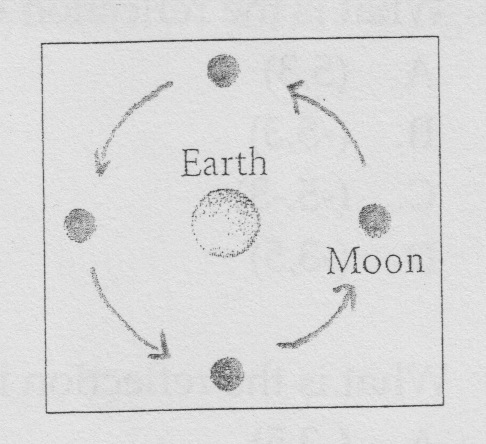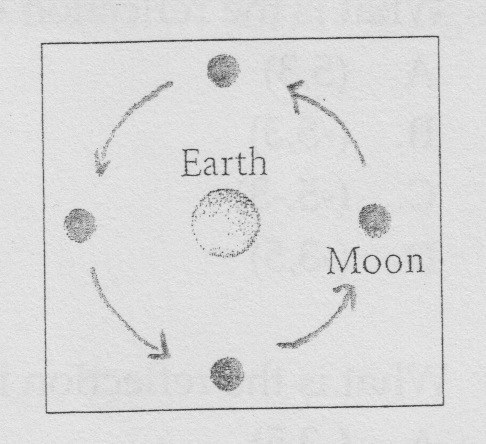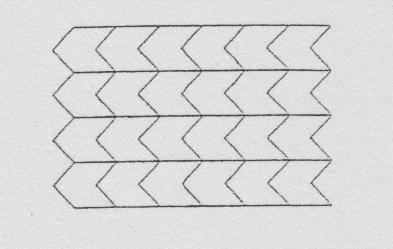Geometry Chapter 9 Test Part I

20 Multiple Choice Questions.
Time Limit: One Hour
- 1.
The point (5,-9) is the image under the translation (x,y) → (x + 3,y + 2). What is the preimage?
- A.
(2, -11)
- B.
(8, -7)
- C.
(2, -7)
- D.
(8, -11)
Correct Answer
A. (2, -11)Explanation
The translation (x,y) → (x + 3,y + 2) shifts every point 3 units to the right and 2 units up. To find the preimage, we need to reverse this translation. Starting from the given point (5,-9), we need to move 3 units to the left and 2 units down to find the original point. Therefore, the preimage is (5 - 3, -9 - 2), which simplifies to (2, -11).Rate this question:
-
- 2.
What rule describes the translation 4 units up and 12 units left?
- A.
(x,y) → (x + 4, y + 12)
- B.
(x,y) → (x – 12, y - 4)
- C.
(x,y) → (x + 4, y - 12)
- D.
(x,y) → (x - 12, y + 4)
Correct Answer
D. (x,y) → (x - 12, y + 4)Explanation
The correct answer is (x,y) → (x - 12, y + 4). This rule describes a translation where the point is moved 4 units up and 12 units to the left. The negative sign in front of the 12 indicates that the translation is to the left, and the positive sign in front of the 4 indicates that the translation is up.Rate this question:
-
- 3.
ΔXYZ has vertices X(-5,2), Y(0,-4), and Z(3,3). What are the vertices of the image of ΔXYZ under the translation (x,y) → (x + 7, y - 5)?
- A.
X’(2,-3), Y’(7,-9), Z’(10,-2)
- B.
X’(-12,7), Y’(-7,1), Z’(-4,8)
- C.
X’(-12,-3), Y’(-7,-9), Z’(-4,-2)
- D.
X’(2,-3), Y’(10,-2), Z’(7,-9)
Correct Answer
A. X’(2,-3), Y’(7,-9), Z’(10,-2)Explanation
The translation (x,y) → (x + 7, y - 5) means that each point in the original triangle is shifted 7 units to the right and 5 units down to get the corresponding point in the image triangle. Using this translation, the coordinates of X(-5,2) become X’(2,-3), the coordinates of Y(0,-4) become Y’(7,-9), and the coordinates of Z(3,3) become Z’(10,-2). Therefore, the vertices of the image triangle are X’(2,-3), Y’(7,-9), and Z’(10,-2).Rate this question:
-
- 4.
What is the reflection image of (5,-3) across the y-axis?
- A.
(5, 3)
- B.
(-5, 3)
- C.
(-5, -3)
- D.
(3, 5)
Correct Answer
C. (-5, -3)Explanation
The reflection image of a point across the y-axis involves changing the sign of the x-coordinate while keeping the y-coordinate the same. In this case, the given point (5,-3) is reflected across the y-axis, resulting in the point (-5,-3).Rate this question:
-
- 5.
What is the reflection image of (5, -3) across the line y = -x?
- A.
(-3, 5)
- B.
(-3, -5)
- C.
(3, -5)
- D.
(3, 5)
Correct Answer
C. (3, -5)Explanation
The reflection image of a point across a line can be found by finding the point of intersection between the line and the perpendicular line passing through the given point. In this case, the line y = -x has a slope of -1. The perpendicular line passing through (5, -3) will have a slope of 1. Using the point-slope form of a line, we can find the equation of the perpendicular line as y - (-3) = 1(x - 5), which simplifies to y = x - 8. Solving the system of equations y = -x and y = x - 8, we find the point of intersection to be (3, -5). Therefore, the reflection image of (5, -3) across the line y = -x is (3, -5).Rate this question:
-
- 6.
What is the reflection image of (a,b) across the line y = -6?
- A.
(a – 6,b)
- B.
(a,b - 6)
- C.
(-12 – a, b)
- D.
(a, -12 – b)
Correct Answer
D. (a, -12 – b)Explanation
The reflection image of a point across a line can be found by reflecting the point over the line. In this case, the line of reflection is y = -6. To find the reflection image of (a,b) across this line, we need to keep the x-coordinate the same and change the sign of the y-coordinate. Therefore, the correct answer is (a, -12 - b).Rate this question:
-
- 7.
The preimage of a reflection lies in Quadrant II and the image is in Quadrant III. Which line could be the line of reflection?
- A.
Y = x
- B.
Y = -x
- C.
X-axis
- D.
Y-axis
Correct Answer
C. X-axisExplanation
If the preimage is in Quadrant II and the image is in Quadrant III, it means that the reflection is happening across the x-axis. This is because the x-axis divides the coordinate plane into two halves - the positive y-axis and the negative y-axis. When a point is reflected across the x-axis, its y-coordinate changes sign while the x-coordinate remains the same. Therefore, the line of reflection in this case is the x-axis.Rate this question:
-
- 8.
Name the image of X for a 240º counterclockwise rotation about the center of the regular hexagon.
- A.
A
- B.
G
- C.
O
- D.
H
Correct Answer
B. GExplanation
When a regular hexagon is rotated counterclockwise by 240º about its center, the image of any point on the hexagon will be located at a position that is two-thirds of the way around the hexagon in the counterclockwise direction. In this case, the image of point X will be located at point G.Rate this question:
-
- 9.
What is the image of (1,-6) for a 90º counterclockwise rotation about the origin?
- A.
(6, 1)
- B.
(-1, 6)
- C.
(-6, -1)
- D.
(-1, -6)
Correct Answer
A. (6, 1)Explanation
A 90º counterclockwise rotation about the origin means that each point on the plane is rotated 90º in the counterclockwise direction around the origin. To find the image of (1,-6) after this rotation, we can switch the x and y coordinates and negate the new x coordinate. Switching the coordinates gives us (-6,1), and negating the x coordinate gives us (6,1). Therefore, the image of (1,-6) for a 90º counterclockwise rotation about the origin is (6,1).Rate this question:
-
- 10.
The same hemisphere of the moon always faces Earth. Thus, the motion of the moon about Earth for a given time interval can be modeled by a rotation. The center of the rotation is the center of the Earth. The angle of rotation is determined by the time interval, given that one journey of the moon around Earth takes about 27 1/3 days.What rotation is modeled by the motion of the moon?
- A.
A circle rotating about its center
- B.
A circle rotation about a point
- C.
2 circles rotating around each other
- D.
A circle rotating around a circle
Correct Answer
B. A circle rotation about a pointExplanation
The motion of the moon around the Earth can be modeled as a circle rotation about a point. The point of rotation is the center of the Earth, and the moon rotates around this point in a circular path. This is because the same hemisphere of the moon always faces the Earth, indicating a rotation around a fixed point. The angle of rotation is determined by the time interval, which is approximately 27 1/3 days for one journey of the moon around the Earth.Rate this question:
-
- 11.
The same hemisphere of the moon always faces Earth. Thus, the motion of the moon about Earth for a given time interval can be modeled by a rotation. The center of the rotation is the center of the Earth. The angle of rotation is determined by the time interval, given that one journey of the moon around Earth takes about 27 1/3 days.In how many days does the moon complete a 90º angle of rotation?
- A.
About 4
- B.
About 7
- C.
About 14
- D.
About 27
Correct Answer
B. About 7Explanation
The moon takes about 27 1/3 days to complete one journey around Earth. Since the motion of the moon can be modeled by a rotation, a 90º angle of rotation would represent one-fourth of the moon's journey. Therefore, the moon completes a 90º angle of rotation in about 7 days (27 1/3 divided by 4).Rate this question:
-
- 12.
Which figure does NOT have rotational symmetry?
- A.
A
- B.
B
- C.
C
- D.
D
Correct Answer
B. BExplanation
Figure B does not have rotational symmetry because it cannot be rotated by any angle and still look the same. The other figures, A, C, and D, have rotational symmetry because they can be rotated by certain angles (such as 90 degrees or 180 degrees) and still maintain their original appearance.Rate this question:
-
- 13.
Which figure, in general, has exactly two lines of symmetry?
- A.
Pentagon
- B.
Circle
- C.
Square
- D.
Rectangle
Correct Answer
D. RectangleExplanation
A rectangle has exactly two lines of symmetry. A line of symmetry is a line that divides the figure into two equal halves that are mirror images of each other. In a rectangle, the two lines of symmetry are the vertical line passing through the center of the rectangle and the horizontal line passing through the center. This means that if you fold the rectangle along these lines, the two halves will perfectly overlap each other. Therefore, the correct answer is rectangle.Rate this question:
-
- 14.
Which quadrilateral has rotational symmetry but not reflectional symmetry?
- A.
Nonisosceles trapezoid
- B.
Kite
- C.
Rhombus
- D.
Parallelogram
Correct Answer
D. ParallelogramExplanation
A parallelogram has rotational symmetry but not reflectional symmetry because it can be rotated by 180 degrees and still appear the same, but it cannot be reflected to create a mirror image of itself. This is because a parallelogram has two pairs of parallel sides, which allows it to be rotated without changing its appearance. However, when a parallelogram is reflected, the sides are no longer parallel, resulting in a different shape.Rate this question:
-
- 15.
What is the smallest angle through which you can rotate a regular hexagon onto itself?
- A.
30º
- B.
60º
- C.
90º
- D.
120º
Correct Answer
B. 60ºExplanation
A regular hexagon has six equal sides and six equal angles. In order to rotate the hexagon onto itself, we need to find the smallest angle that brings the hexagon back to its original position. Since the hexagon has six equal angles, we can divide 360º (the total angle measure of a hexagon) by 6 to find the measure of each angle, which is 60º. Therefore, the smallest angle through which we can rotate a regular hexagon onto itself is 60º.Rate this question:
-
- 16.
Find the image of P(11,-5) for the translation (x,y) → (x – 12, y – 6) followed by a reflection in x = 0.
- A.
(1, -11)
- B.
(-1, 11)
- C.
(1, 11)
- D.
(-1, 11)
Correct Answer
A. (1, -11)Explanation
The translation moves the point P(11,-5) 12 units to the left and 6 units down, resulting in the point (-1, -11). The reflection in x = 0 means that the point is reflected over the y-axis, resulting in the point (1, -11). Therefore, the correct answer is (1, -11).Rate this question:
-
- 17.
A reflection in the y-axis followed by a reflection in the x-axis does NOT give the same result as which of the following transformations?
- A.
A reflection in the x-axis by a reflection in the y-axis
- B.
A rotation of 180º
- C.
A rotation of 90º followed by a reflection in the x-axis
- D.
A reflection in the line y = x followed by a reflection in the line y = -x
Correct Answer
C. A rotation of 90º followed by a reflection in the x-axisExplanation
When we reflect a figure in the y-axis, the x-coordinates of all the points are negated while the y-coordinates remain the same. When we reflect the resulting figure in the x-axis, the y-coordinates of all the points are negated while the x-coordinates remain the same. This sequence of transformations effectively flips the figure over both the x-axis and the y-axis.
On the other hand, a rotation of 90º followed by a reflection in the x-axis would involve rotating the figure 90º counterclockwise and then flipping it over the x-axis. These two transformations do not result in the same figure as the given sequence of reflections in the y-axis and x-axis. Therefore, the correct answer is a rotation of 90º followed by a reflection in the x-axis.Rate this question:
-
- 18.
Which figure will NOT tessellate a plane?
- A.
A
- B.
B
- C.
C
- D.
D
Correct Answer
B. BExplanation
A figure tessellates a plane if it can be repeated infinitely without any gaps or overlaps to cover the entire plane. Looking at the figure B, it has irregular shapes and angles which will not fit together perfectly to cover the plane without gaps or overlaps. Therefore, figure B will not tessellate a plane.Rate this question:
-
- 19.
You can tessellate a plane using a regular octagon together with which other type of regular polygon?
- A.
Triangle
- B.
Square
- C.
Pentagon
- D.
Hexagon
Correct Answer
B. SquareExplanation
A plane can be tessellated using a regular octagon together with a square. The regular octagon and square can be arranged in a pattern where each octagon shares a side with a square, creating a repeating pattern that covers the entire plane without any gaps or overlaps. This is a valid tessellation because the octagon and square have the same side lengths and angles, allowing them to fit together perfectly.Rate this question:
-
- 20.
Which is NOT a symmetry for the tessellation?
- A.
Line Symmetry
- B.
Translational symmetry
- C.
Rotational symmetry
- D.
Glide reflectional symmetry
Correct Answer
C. Rotational symmetryExplanation
Rotational symmetry is not a symmetry for the tessellation because a tessellation is a pattern that repeats without any rotation. Rotational symmetry refers to the property of an object or shape being able to be rotated and still look the same. In a tessellation, the pattern remains the same when it is translated or reflected, but not when it is rotated. Therefore, rotational symmetry is not applicable to tessellations.Rate this question:
-
Quiz Review Timeline +
Our quizzes are rigorously reviewed, monitored and continuously updated by our expert board to maintain accuracy, relevance, and timeliness.
-
Current Version
-
Mar 20, 2023Quiz Edited by
ProProfs Editorial Team -
Mar 20, 2011Quiz Created by
Pchao29
- Arithmetic Quizzes
- Calculus Quizzes
- Data Handling Quizzes
- Decimal Quizzes
- Discrete Mathematics Quizzes
- Equation Quizzes
- Fraction Quizzes
- Function Quizzes
- Graph Quizzes
- Measurement Quizzes
- Multiplication Quizzes
- Number Quizzes
- Percentage Quizzes
- Place Value Quizzes
- Probability Quizzes
- Problem Solving Quizzes
- Ratio Quizzes
- Shape Quizzes
- Statistics Quizzes
- Trigonometry Quizzes






